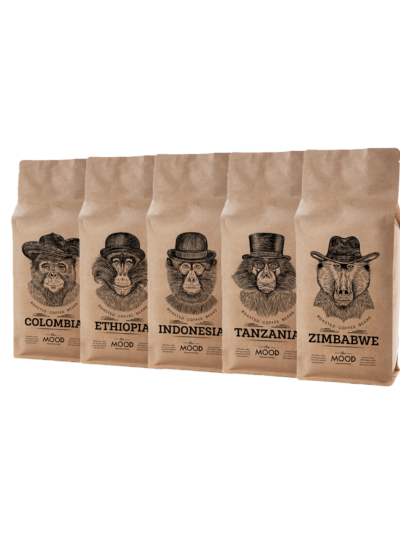The Asian continent has long been renowned for its vast variety of spices, which once dazzled European nobility. Formerly exclusive luxuries accessible only to aristocracy, many of these treasures from the continent have now become integral parts of our daily cuisine—peppers, cinnamon, and ginger are just a small fraction of the immensely popular spices whose origins trace back to Asia. While it may seem that Asia’s natural bounty has long been opened to the world’s gourmet kitchens, with fewer surprises left to uncover, it continues to amaze. This time, we would like to draw your attention to rare and exotic citrus peppers, still seldom found in European cuisine but intriguing to the curious due to their unique qualities.
The first are the Red Szechuan berries from Sichuan Province in southern China, and the second are Timur berries from the foothills of the Himalayas in Nepal. These berries, belonging to the same Zanthoxylum species of the Rutaceae family, which includes citrus fruits familiar to Lithuania, such as the so-called rue. Despite their peppery taste, these berries have acquired the name of citrus pepper, but in reality, their bushes to the black pepper plants of species are
The Red Szechuan Berries
The Red Szechuan berries originate from Sichuan Province in southern China. This province is renowned as one of China’s four great culinary regions, distinguished by its unique traditions and exceptional dishes. One ingredient that adds distinctiveness to Sichuan cuisine is the Szechuan berry, used in many Sichuan dishes and spice blends. While these berries can be used fresh, they are most commonly encountered dried, with their seeds removed. The flavor and aroma of Szechuan berries come from the fruit rather than the seeds, which are often known for their spiciness. The berries themselves have a mildly peppery taste and are prized for their citrusy aftertaste and unique numbing effect, which lightly numbs the tongue. Due to this characteristic, they are often used in spice blends alongside hot peppers.
Culinary historian Harold McGee, in his book “On Food and Cooking: The Science and Lore of the Kitchen,” describes this distinctive quality of Szechuan berries: “They induce a strange, tingling numbness that is reminiscent of carbonated drinks or a mild electric current. The berries seem to act on several nerve endings at once, causing sensitivity and numbness simultaneously, which is not typical for these nerve endings.”
Sensation
Red Szechuan berries initially reveal a gentle tingling sensation, which transitions into spicy and sharper flavor notes. These gradually give way to a pronounced citrusy aftertaste and a mild numbing effect that lightly envelops the palate.
Smell
The aroma is characterized by a scent of dried flowers with hints of cherry and citrus. It features sweet, summery floral undertones.
Appearance
The Red Szechuan berries are small, wrinkled, thick-skinned, and red in color, resembling dried wild strawberries at first glance. Inside, the Red Szechuan berries feature a warm, sandy yellow color.
In the Kitchen
Red Szechuan berries can be used quite widely in the kitchen – whole berries are used in soups and stews. Crushed or ground berries will add a unique flavor to chicken or duck dishes, spring salads, or other vegetables, adding some black fish dishes.
Recommended with:
- Fried chicken breast;
- Baked potatoes with cabbage and sour cream sauce;
- Roasted asparagus beans;
- Sweet fruit salads
Timur Berries

Timur Berries
Timur berries grow in the pristine surroundings of nature, at approximately 2000 meters altitude, at the foothills of the Himalayan mountains. They have been highly valued in Nepal for their exceptional culinary and medicinal properties for thousands of years.
In a 2018 BBC list of 15 latest culinary trends, Timur berries from Nepal were highlighted for their unique qualities. They are described as “sharp and lively, with a surprising grapefruit aftertaste, and they leave a lingering tingling sensation on the palate.”
Timur berries are relatives of Szechuan peppers and are known for their numbing and anesthetic effects. In Nepal, they are often used in folk medicine to alleviate toothaches, promote blood circulation (due to their high iron content), increase appetite, boost metabolism, and strengthen the immune system.
Apart from their medicinal uses, Timur berries are also incorporated into everyday Nepalese cuisine. Despite their similarities to Szechuan peppers, Timur berries stand out with a distinct, slightly milder taste, strong aroma, and pronounced grapefruit aftertaste.
Sensation
Firstly, there is a mild, gentle spiciness that is not akin to the bitterness of coffee beans, gradually replaced by a citrusy grapefruit aftertaste and a gentle numbing sensation that lightly envelops the palate.
Smell
Timur berries are characterized by a strong dominant grapefruit aroma with notes of wildflowers and hints of honey sweetness.
Appearance
Small, petite berries of uniform shape, distinguished by a rich red wine color reminiscent of black peppercorns. Inside, the berries exhibit a dark amber-yellow hue.
In the Kitchen
These berries are recommended for use with roasted chicken or duck dishes. They complement freshly grilled fish or shellfish well. Similar to Szechuan berries, Timur berries are used to enhance dark chocolate desserts or sweet fruity desserts. It is recommended to crush the berries before using them.
Recommended with:
- Steamed momo dumplings;
- Crispy marinated turkey breast;
- Strawberries with chocolate ganache;
- Gin and tonic cocktail with rosemary.










